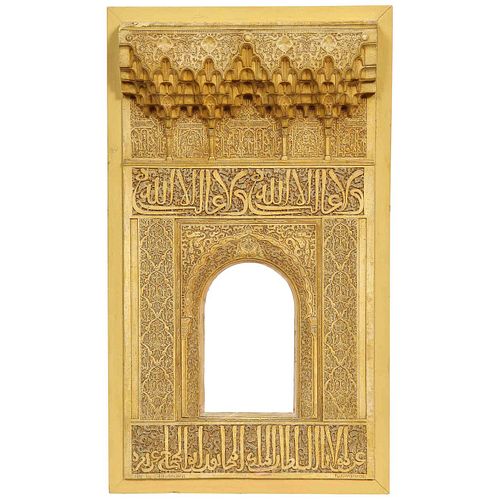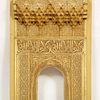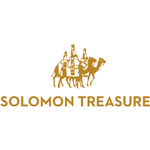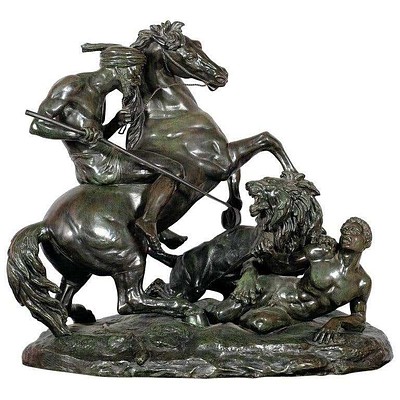Rafael Contreras Alhambra Architectural Model Plaque
Lot 90
About Seller
Solomon Treasure
1050 2nd Ave #83
NY, NY 10022
United States
Four Generations of collecting exquisite European Art & Antiques.
Categories
About Auction
By Solomon Treasure
Nov 4, 2021 - Dec 4, 2021
Set Reminder
2021-11-04 00:00:00
2021-12-04 00:00:00
America/New_York
Bidsquare
Bidsquare : Pre-Holiday Magnificent Treasures Sale
https://www.bidsquare.com/auctions/solomon-treasure/pre-holiday-magnificent-treasures-sale-7835
Pre-Holiday Magnificent Treasures Sale Solomon Treasure mory@solomontreasureny.com
Pre-Holiday Magnificent Treasures Sale Solomon Treasure mory@solomontreasureny.com
- Lot Description
Rafael Contreras (Spanish, 1824 - 1890) Alhambra Architectural Model Plaque, 19th century. A large and magnificent Hispano-Moresque Alhambra plaque by Rafael Contreras with Arabic calligraphy. Colored plaster (original stucco, tiling and wood), Spanish inscription label verso, signed R. Contreras in plaster lower right, inscribed "De la Alhambra" lower left. Measures: 22" high x 13" wide Good condition, normal wear consistent with age and use. Many models of the Alhambra survive today in major museums and institutions worldwide. Most of these were made by the head restorer of the Alhambra Rafael Contreras, who carried out a major restoration in the Nasrid palace between 1847 and 1889. He aimed to change the look of the Alhambra to create a more ‰ЫПOriental‰Ыќ building. Parallel to his works on the building, he created a successful business based on architectural models and plaster casts of the Alhambra, reviving old Nasrid plaster techniques and introducing new ones. He sold these objects as souvenirs to the many tourists who visited the palace in the nineteenth century, especially from Britain, thus spreading his own vision of the Alhambra. He Alhambra Palace in Granada was built during the Nasrid dynasty (1232-1492), the last period of Muslim rule in Spain. The buildings were therefore highly decorated in the Islamic taste with geometric patterns and elaborate floral decoration interwoven with Arabic calligraphy. After Granada's capture in 1492 by Ferdinand and Isabella, the Spanish converted the Alhambra to a Casa Real, or royal residence. By the turn of the 19th century the Alhambra complex had fallen into a Romantic state of disrepair and this, coupled with the beginnings of Spanish Orientalism, drove a movement from within Spain to preserve and study the palace. The architect and draughtsman Rafael Contreras (d. 1890) was the most important member of three generations responsible for the restoration of the Alhambra Palace during the late 19th and early 20th centuries. His father JosМ© Contreras was arquitecto de la Alhambra from 1830 and Rafael continued his work becoming restaurador adornista in 1847 on his father's death. The earliest visitors to the Alhambra had taken to chiseling away pieces of decoration as keepsakes. To prevent further vandalism and to capitalize on the market for souvenirs, Contreras М© Hijo produced plaster replicas for retail, a selection of which were acquired by the Victoria and Albert Museum in London. Lots 102 and 103 are rare examples of the firm's work in silvered-metal electroplate made directly from plaster casts of the decoration drawn from various architectural segments of the Alhambra Palace. By 1840, the English firm Elkington & Co. had pioneered and patented the electroplating technique, and wares in the 'Alhambra style', namely a massive console and mirror, were exhibited to overwhelming acclaim by the firm at the 1862 London International Exhibition. The fortunes gained from the patent resulted in a massive output of wares by Elkington incorporating the technique. For Contreras М© Hijo, the exorbitant costs associated with manufacture produced far fewer works and the scale models and furnishings were almost certainly supplied on special commission to collectors or for exhibition display.Good
Condition
- Shipping Info
-
In House
-
- Payment & Auction Policies
-
Available payment options
-



 EUR
EUR CAD
CAD AUD
AUD GBP
GBP MXN
MXN HKD
HKD CNY
CNY MYR
MYR SEK
SEK SGD
SGD CHF
CHF THB
THB
























